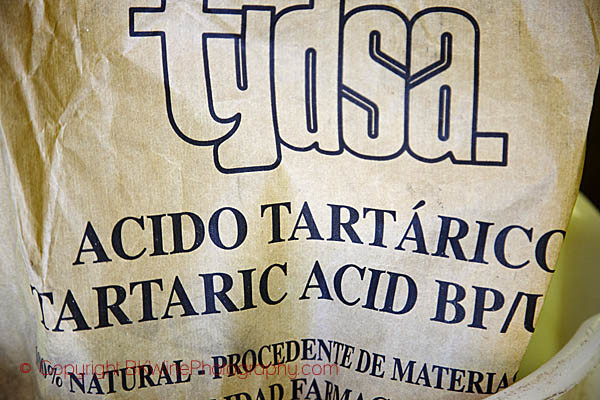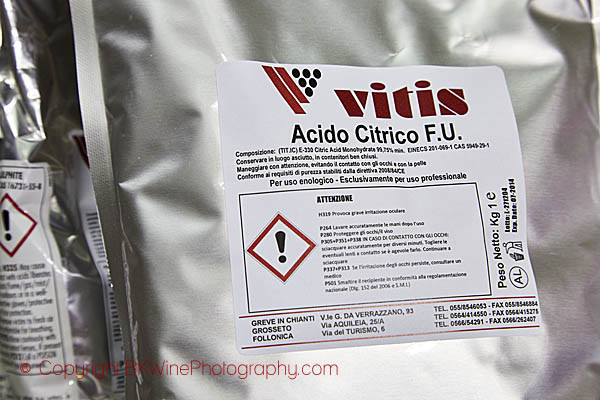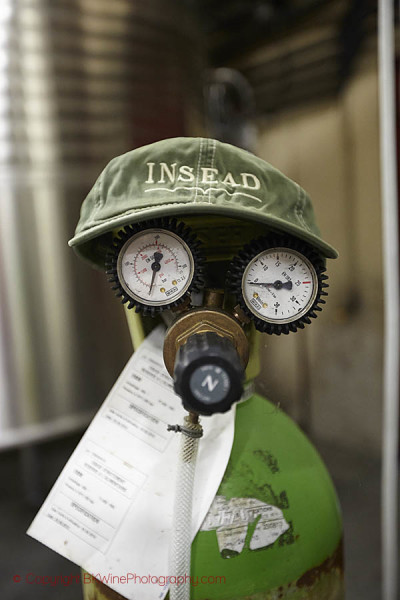“When making organic wine you use no additives and you don’t spray toxins in the vineyard”. Just a little bit exaggerated (but only slightly) this is what one can both hear said and read sometimes. But it is completely wrong. Organic wine producers both spray their vines and use processing aids (“additives”) in the wine cellar. In most cases.
And a good thing it is! On the whole, we should be very happy that organic winemakers do so. Not to spray at all in the vineyard and not using any processing aids or additives in wine production would in most cases result in wines that nobody wants to drink and which in many cases would be defective.
In other words, spraying the vineyard and working with various “additives” in winemaking is in most cases good, a positive thing. Just like in all other food manufacturing. Provided that you do it properly and intelligently. Both for organic wine and for “conventional” wine there are strict rules for what you can do and what you cannot do. The rules for the organic producers are more restrictive than for conventional.
Exactly what you can and cannot do, is described in detail in our book Biodynamic, Organic and Natural Winemaking.
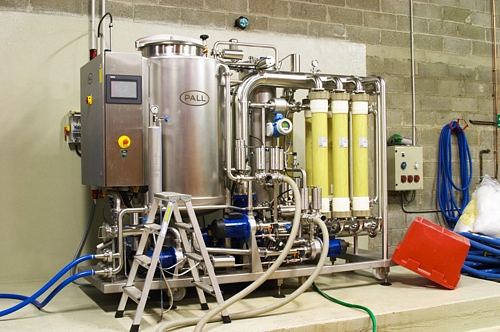
The point of this is of course that the producer wants to create as good and stable a wine as possible. For example, in some years it can be difficult to get enough “natural” yeast and therefore he uses cultured yeast (which, however, is also “natural” although it is cultured). Some “additives” makes it easier to get a wine that is clear and that has a stable colour. You may need to add extra nutrients for the yeast to make it work more effectively. And so on.
There is normally no traces of these “additives” left in the wine once it is finished.
None of the additives are used to “flavour” the wine (as is sometimes mistakenly said). With essentially only one exception: the oak. Oak, in the form of barrels or chips or staves, is an “addition” that directly affects the taste. But rarely do we hear demands from those who criticise “additives” in wine that oak barrels should be forbidden, although they are the most dramatic effect on a wine’s flavour.
In most cases it would be better to call this “processing aids” rather than “additives”.
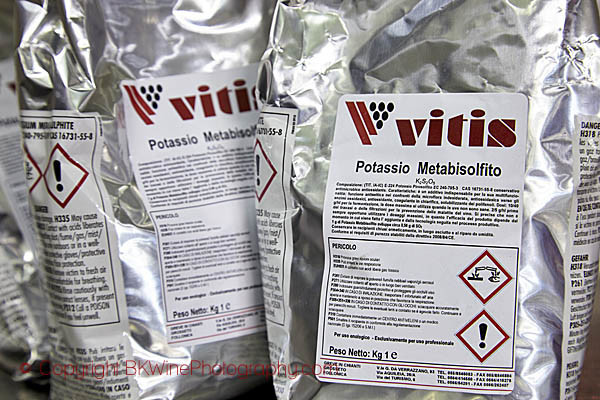
ITAB, Institut Technique de l’Agriculture Biologique, has recently published a study of the techniques (additives, processing aids) that organic producers use the most: “l’enquête nationale sur les pratiques et les besoins œnologiques en Bio 2014”.
You can find more interesting reports on Sud & Bio.
240 winemakers, members of ITAB, answered questions about how they work. They looked at 46 different processing aids / techniques / additives. Here are the most used, according to the report:
- Sulphur, SO2, used by 79% of respondents. (It’s actually a surprisingly small percentage. The fact that 21% would not use sulphur seems a bit unlikely.)
- Filtration:
- Tangential 15%
- Press Filter 19%
- Other type of filter 36%
- Oak barrels: 48%
- Naturally occurring yeast: 53% (this is rather an absence of added yeast)
- Bentonite: 31%
- Naturally occurring yeast with a preparatory launch batch: 27% (“pied de cuve”, also without commercial yeast)
- Cultured (“commercial”) yeast, not organic: 27%
- Ammonium phosphate: 26%
- Cultured yeast, organic: 21%
- Gum arabic: 21%
- Oak chips:
- In the vinification 11%
- At maturation 7%
- Thiamine: 13%
- Oenological charcoal (active carbon): 14%
- Citric acid: 14%
- Metatartaric acid: 12%
- Sucrose (sugar) for chaptalisation (enrichment): 11%
- Lactic acid bacteria, cultured / “commercial”: 10%
- Vegetable protein fining agents (“colle protéique végétale”): 10%
- Tannin: 9%
- With several other processing aids in smaller numbers.
The report notes that most processing aids are used by relatively few organic growers.
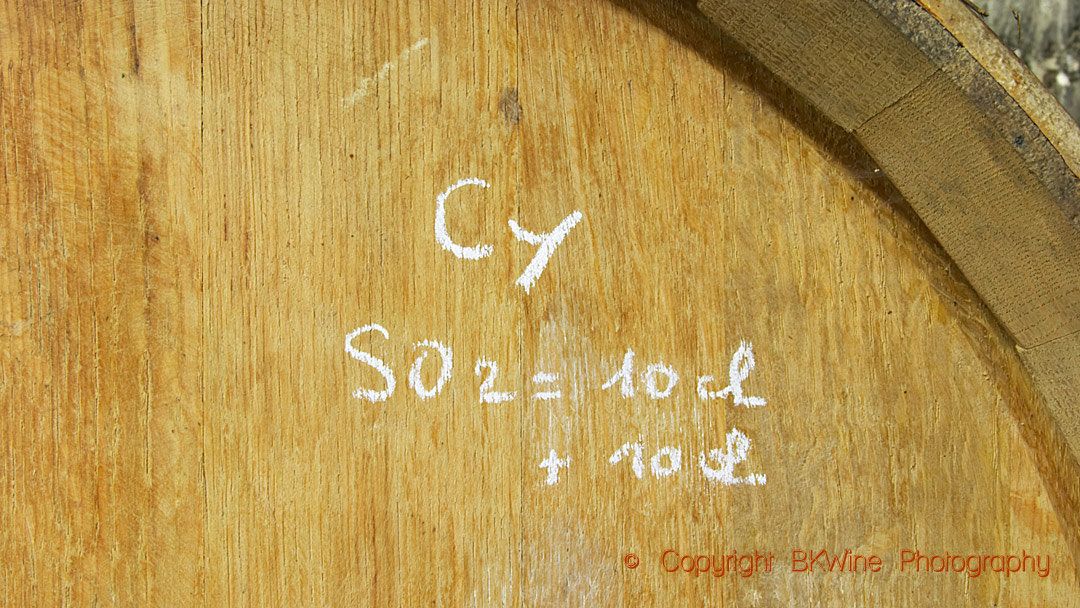
The most commonly used are:
- Sulfur
- Some type of cultured yeasts
- Oak barrels
- Filtration in some form
There are a few things that particularly surprise me:
That so few use commercial lactic acid bacteria to help the “malolactic fermentation”. It is a relatively new technology, but today it appears to be very widely used. That so few use it in this study is surprising.
The second surprising thing is that so many are working with “natural” yeast, in other words rely on the yeast found on the grape skins and in the cellar air: 80% (53% + 27%, but it is perhaps not correct to do this addition). It is clear from the figures that a number of producers work with both natural yeast and cultured yeasts. Commercial yeast is used by 48% (21% + 27%, same caveat) of the producers. Many producers today see it as more risky to not use cultured yeast. This seems to be an underestimate of how many work with cultured yeasts.
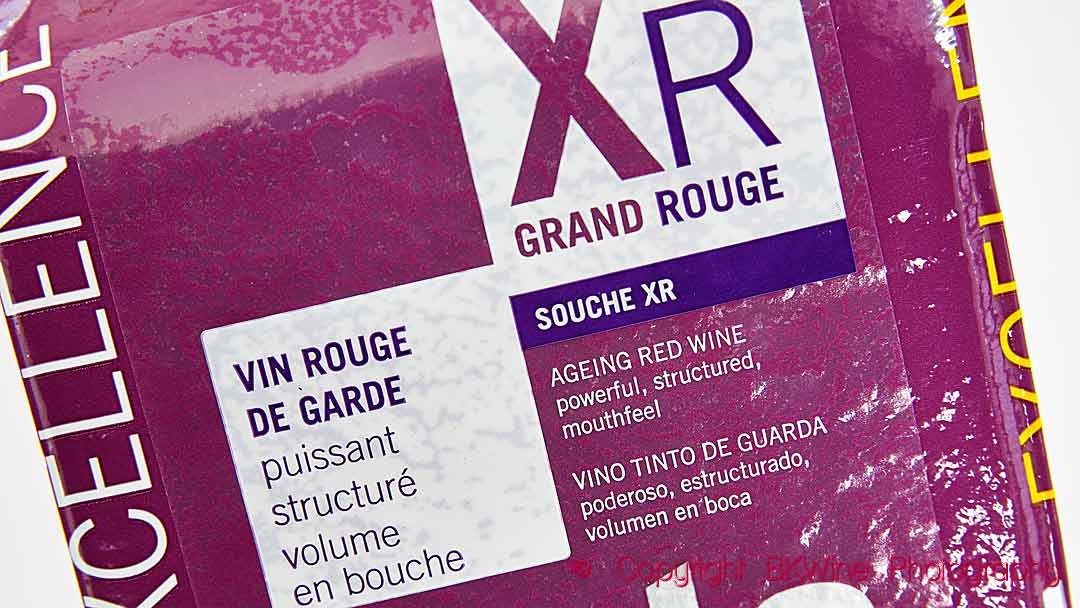
The third is the sulphur. Although it is the most common technique, I think 79% is a significant underestimation of reality. There are probably very, very few who actually work without sulphur.
Something that is also a little bit surprising is how frequently used (relatively speaking) some techniques are: various yeast nutrients, gum arabic, and active carbon are those that I would not have expected to come so high up in a list.
It may illustrate the difficulty of “statistics”. A sample of 240 farmers is interesting, but it does not provide statistically reliable information. Yes, it shows trends and tendencies, but the exact figures cannot be interpreted as universal. So one should interpret these figures with caution. It is not something that shows a general “the truth”, but rather something that shows certain trends and tendencies.
Many of the other less common “additives” falls into one of these categories:
- Clarifying agents (eg, bentonite)
- Yeast nutrients (eg, ammonium phosphate, thiamin, yeast cell shells)
- Stabilization of colour and / or taste (eg gum arabic)
- The correction / adjustment of acidity, tannin, alcohol
What is perhaps most the most questionable technique (but one that is curiously rarely questioned) is the use of sugar for enrichment (chaptalisation), whose purpose is solely to increase the alcoholic strength. But that of course applies not only to organic growers. On the whole, one could today ask whether it is really necessary and a good idea to increase the alcohol content by the addition of sugar to the must. Why not introduce a rule for a mandatory declaration of “enrichement” on the label: “alcohol level increased by adding sugar”? Pretty much like for sulphur, “contains sulphites”…
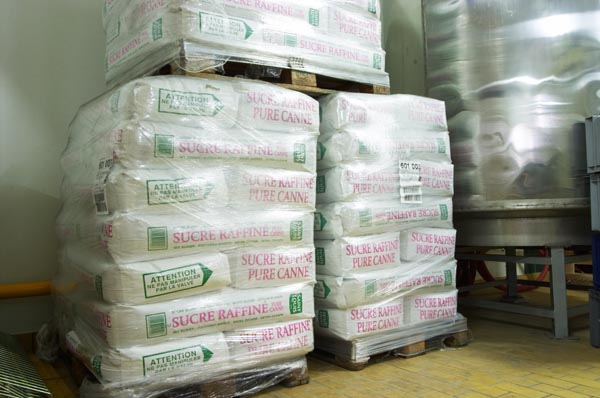
The report also notes that the use of processing aids varies much, partly depending on the type of wine produced (red, white, sweet, sparkling, rosé) and also from year to year. In other words, winemakers do not use the processing aids systematically and in a formulaic way but only to the extent that they consider it needed.
As I said, if you are interested in these issues you will find much more information on all of this in our book Biodynamic, Organic and Natural Winemaking.
For those who want to go more in depth the report also presents the results of questions about what techniques the wine producers think should be allowed and which they consider should be prohibited. Interesting input for speculation on what changes we will see in the organic rules in the future. Because the will change! You can find the link there above.
